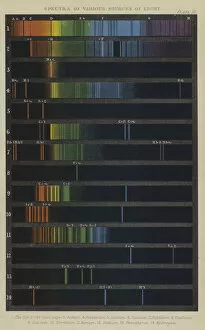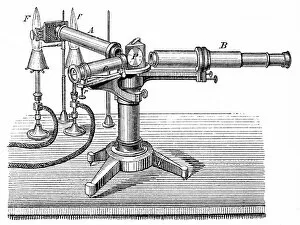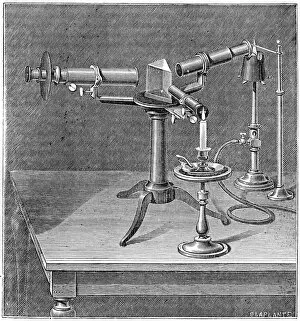Rubidium Collection
"Unveiling the Secrets of Rubidium: A Journey through Spectra and Science" In the realm of scientific discovery
All Professionally Made to Order for Quick Shipping
"Unveiling the Secrets of Rubidium: A Journey through Spectra and Science" In the realm of scientific discovery, few elements have captivated researchers quite like rubidium. Dating back to the 19th century, eminent scientists Gustav Kirchhoff, Robert Bunsen, and Henry Roscoe embarked on a groundbreaking exploration into the spectral properties of various sources of light. Through their meticulous experiments and observations in c1860, these pioneers laid the foundation for our understanding of rubidium's unique characteristics. Gustav Robert Kirchhoff, a German physicist renowned for his contributions to spectroscopy, further expanded upon this knowledge in 1873 and again in 1876. Their innovative spectroscopic apparatuses became indispensable tools in unraveling the mysteries hidden within rubidium's atomic structure. The spectroscope employed by Bunsen and Kirchhoff around 1895 allowed them to analyze light emitted or absorbed by different substances with unparalleled precision. As we delve deeper into history, it becomes evident that these brilliant minds were not solely fixated on rubidium but also made significant strides in other scientific domains. Their work paved the way for advancements such as Rutherfordium's atomic structure elucidation and cemented Robert Bunsen's status as a prominent German chemist. While exploring rubidium's properties may seem isolated from its elemental counterparts like potassium or even its distant relative cesium; it is important to remember that all elements are interconnected within nature’s grand tapestry. Each discovery builds upon previous knowledge—like an intricate puzzle waiting to be solved. Today, thanks to tireless efforts spanning centuries, we can appreciate both the beauty and utility of this remarkable element known as rubidium. From its role in medical imaging technology to its applications in quantum physics research—the possibilities seem endless. So let us celebrate those who dared venture into uncharted territories armed only with curiosity and ingenuity.










